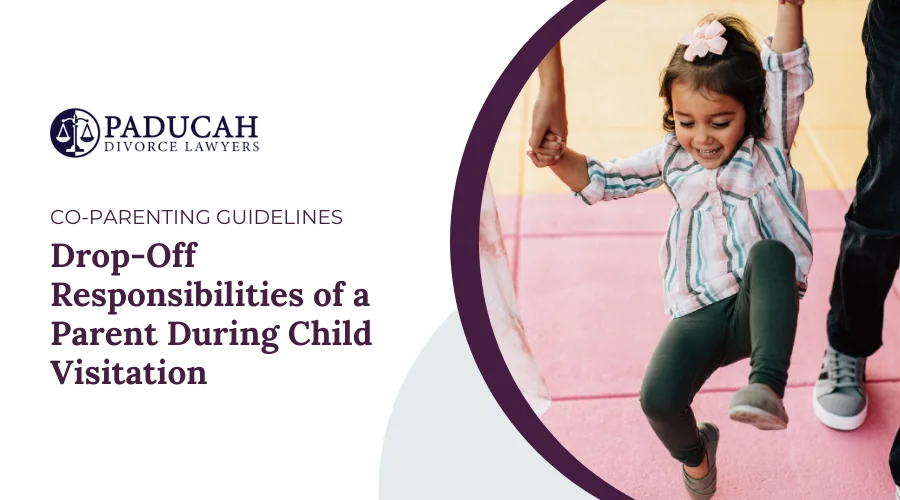Navigating child visitation is a cornerstone of successful co-parenting. While ensuring quality time with both parents is essential, establishing clear responsibilities for drop-offs and pick-ups ensures a smoother transition for everyone involved, especially the child.
Key Takeaway:
- Co-parenting arrangements require careful coordination, especially when it comes to drop-off responsibilities during child visitation.
- Clear communication, mutual flexibility, and prioritizing the child’s emotional well-being can make transitions smooth and stress-free for everyone involved.
Understanding Child Visitation and Drop-Off Responsibilities
Child visitation is more than just a logistical arrangement; it’s a vital opportunity to nurture parent-child relationships. However, determining who handles the drop-off and pick-up can be a common source of conflict if not clearly outlined. By addressing this issue early and collaboratively, parents can prevent misunderstandings and focus on creating a nurturing environment for their children.
Why Drop-Off Responsibilities Matter
The process of moving a child between homes is more than a routine task; it’s a pivotal moment that sets the tone for their experience. A seamless drop-off reinforces stability and security, two elements crucial for a child’s emotional well-being. When both parents actively contribute to this process, it fosters a cooperative co-parenting relationship that benefits everyone.
Who Is Responsible for Drop-Off and Pick-Up?
Responsibilities for drop-offs and pick-ups vary depending on the specifics of the parenting plan, court orders, or informal agreements. While some arrangements explicitly detail these responsibilities, others leave it open for parental negotiation. Here are key considerations:
Factors to Consider:
- Schedules: Work commitments and availability of both parents.
- Proximity: The distance between the two homes.
- Child’s Routine: Minimizing disruption to the child’s daily schedule.
- Fairness: Striking a balance in responsibilities to avoid overburdening one parent.
Should the Receiving Parent Handle Pick-Up?
There’s no one-size-fits-all answer. Often, the receiving parent’s involvement in the pick-up makes logistical sense, especially if they’re more flexible or closer in proximity. However, both parents should weigh the following:
- Child’s Needs: The transition should prioritize the child’s comfort and stability.
- Cooperation: Fair arrangements build trust and reduce resentment.
The Role of Non-Custodial Parents in Drop-Offs
Non-custodial parents have a vital role in their child’s life, and their active participation in drop-offs can strengthen this bond. Here’s how non-custodial parents can engage:
- Proactive Involvement: Show willingness to assist with transportation.
- Timeliness: Ensure punctuality to demonstrate reliability.
- Communication: Keep open lines of communication with the custodial parent to address scheduling conflicts or changes.
Practical Tips for Managing Drop-Off Responsibilities
- Create a Clear Schedule: Outline specific days, times, and responsibilities in the parenting plan.
- Communicate Openly: Discuss and update arrangements as needed.
- Use Neutral Locations: If tensions are high, consider a neutral drop-off point to minimize conflict.
- Leverage Technology: Use co-parenting apps to track schedules and reduce miscommunication.
Frequently Asked Questions (FAQs)
Q1: Who is typically responsible for the drop-off during child visitation?
A: Responsibilities vary and are often detailed in the parenting plan. If not specified, co-parents should discuss and agree on a suitable arrangement.
Q2: Can drop-off responsibilities be negotiated between co-parents?
A: Absolutely. Many parenting plans allow for flexibility, enabling parents to adapt arrangements to their unique situations.
Q3: What aspects need to be considered when deciding on drop-off responsibilities?
A: Key factors include parental schedules, work commitments, proximity, and, most importantly, the child’s comfort and routine.
Q4: What if there’s a conflict in drop-off schedules?
A: Communication is crucial. Parents should discuss alternatives, seek compromises, or involve a mediator if necessary.
Q5: Should the receiving parent always handle pick-up?
A: Not necessarily. The decision depends on practical considerations and what’s best for the child.
Q6: How can non-custodial parents actively participate in drop-off responsibilities?
A: Non-custodial parents can express their willingness to help, coordinate with the custodial parent, and ensure a smooth transition for the child.
Q7: What role does open communication play in managing drop-off responsibilities?
A: Open communication ensures transparency, allows for adjustments and helps maintain a cooperative co-parenting relationship.
Final Thoughts
Handling drop-off responsibilities during child visitation requires thoughtful planning and open dialogue. When parents prioritize the child’s well-being and work together, they create a positive and supportive co-parenting environment. By fostering mutual respect and flexibility, these seemingly small logistics can significantly enhance the co-parenting experience.
Discover how our legal expertise can support your co-parenting journey with a free initial consultation from the Paducah Divorce Lawyer. Together, we’ll help you navigate these challenges to ensure the best outcomes for you and your child.






